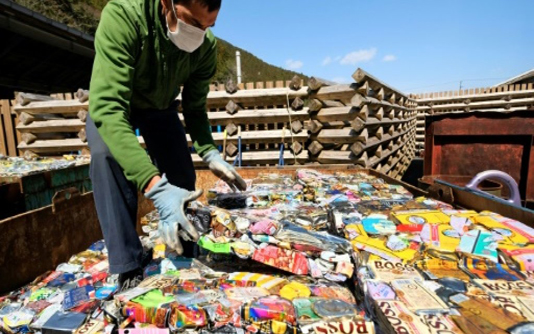KAMIKATSU, Japan, June 16, 2019 (BSS/AFP) – Plastic, paper, metal? In
Japan’s Kamikatsu, sorting rubbish isn’t that simple. Residents face a mind-
boggling 45 separate categories for their garbage as the town aims to be
“zero-waste” by 2020.
And that’s not all: there isn’t even trash collection. The 1,500 residents
of the town in western Japan have to transport their waste themselves to a
local facility.
“Yes, it’s complicated,” said Naoko Yokoyama, a 39-year-old resident who
had brought her trash to the town’s waste centre.
“But I have become more environmentally conscious since I moved here a year
ago,” she told AFP.
The categories cover everything from pillows to toothbrushes as the town
aims to recycle all its waste, sending nothing to incinerators, by next year.
The process can be onerous — not only are there dozens of separate
categories, but items like plastic bags and bottles must be washed and dried
to facilitate recycling.
At the town’s waste facility, there are dozens of different boxes for each
category. If the parts of an item fall into different categories for
recycling, residents are expected to take them apart and send each bit to the
right container.
One man who had brought in a shelf had to use a hammer to prise the wood
from the metal, while elsewhere workers chopped up a thick, long rubber tube
so it would fit into a sorting box.
Many parts of Japan already require separation of rubbish, but most areas
have just a few categories, with the bulk of household waste going to
incinerators.
– ‘Let’s recycle’ –
Kamikatsu was not much different until an ultimatum: in 2000, the town was
ordered to shut down one of its incinerators because it no longer met
stricter emissions standards.
That left the town with just one incinerator that couldn’t handle all of
Kamikatsu’s waste, and there wasn’t enough money for a new one or to pay a
neighbouring town for use of theirs.
“We thought, ‘If we can’t burn waste in the town, then let’s recycle.’ It’s
cheaper to recycle waste than burn it,” said town official Midori Suga.
Kamikatsu is already close to achieving its goal, recycling about 80
percent of the 286 tonnes of waste it produced in 2017, far more than the
national average of 20 percent.
The remainder, like most waste in Japan, is incinerated, as the country’s
mountainous terrain considered unsuitable for landfills.
The nation produces less general waste per person than most developed
countries, but it generates more plastic waste per capita than anywhere
except the United States.
In the past, some plastic was exported for recycling, particularly to
China, but a ban by Beijing on imports has left plastic recyclables piling up
in parts of Japan.
Still, not all residents think the initiative could work elsewhere.
“It works because we’re only 1,500 people here,” said Yokoyama, who moved
from Kyoto.
“It would be difficult in a big town with a larger population,” she added,
because authorities would struggle to enforce it.
– Reduce consumption – But other residents say the policy is just common
sense.
“I understand it’s convenient to just burn waste,” said 71-year-old local
Saeko Takahashi, as she washed milk cartons and tied newspapers together.
“It’s better to recycle, it’s such a waste otherwise,” she explained.
She uses a compost bin for food waste such as fish and meat and throws
vegetable waste directly into her garden.
“Food lasts longer when it’s shipped in plastic packaging. So it’s not all
bad, but multiple layers of plastic aren’t necessary,” added Takahashi.
Kazuyuki Kiyohara, manager of the waste centre, said plastic makes up the
majority of the residents’ waste — and despite the scheme there has been
little reduction in consumption.
“Our lifestyle depends mainly on plastic,” the 38-year-old said, adding:
“Consumers can reduce plastic waste to a certain extent, but we’ll still have
waste if producers keep making plastic products.”
In 2018, Japan’s government unveiled a proposal to tackle plastic waste,
with the goal of reducing the 9.4 million tonnes produced by the country each
year by a quarter by 2030.
The plan proposes that retailers should charge for plastic bags — a
measure already widely adopted around the world — but that isn’t expected to
come into effect before 2020 and other types of plastic packaging won’t be
covered.
Town official Suga said even Kamikatsu will struggle to achieve zero-waste
without stronger efforts to reduce consumption.
She said: “We have made efforts to achieve zero incineration and zero
landfill disposal goals, but it’s not enough.”
She explained: “We shouldn’t focus just on how to dispose of trash. We need
to come up with policies that prevent the production of waste.”



